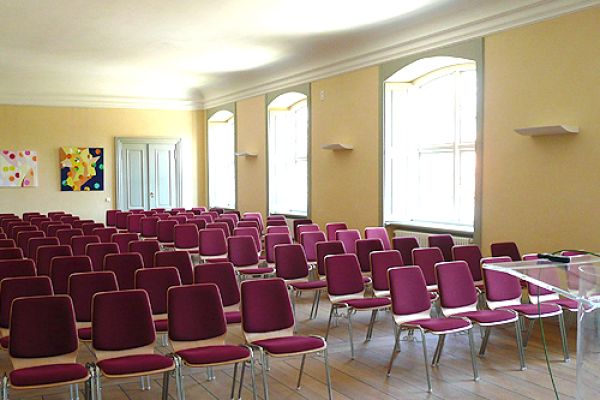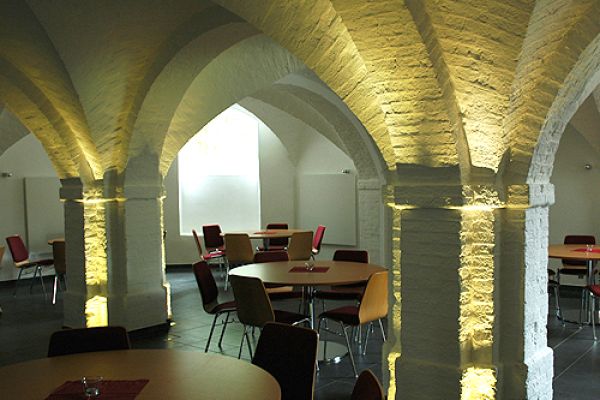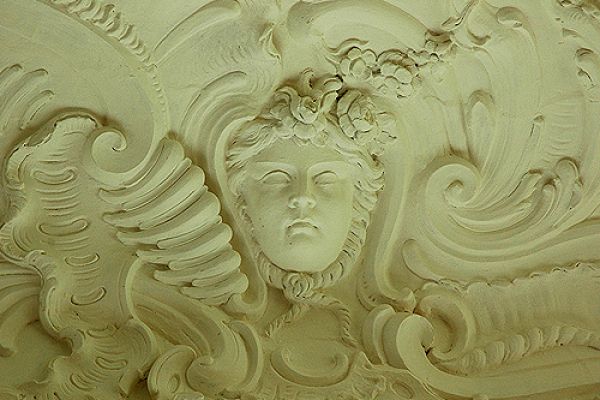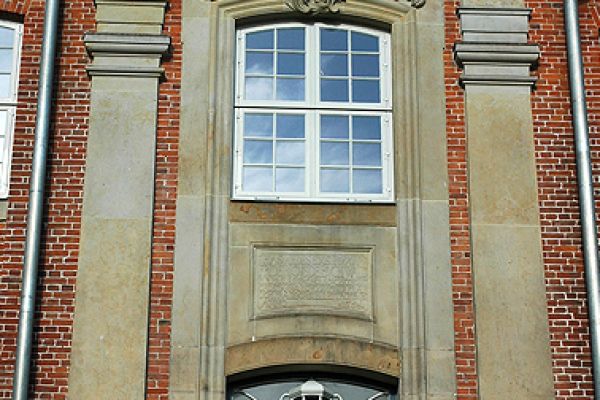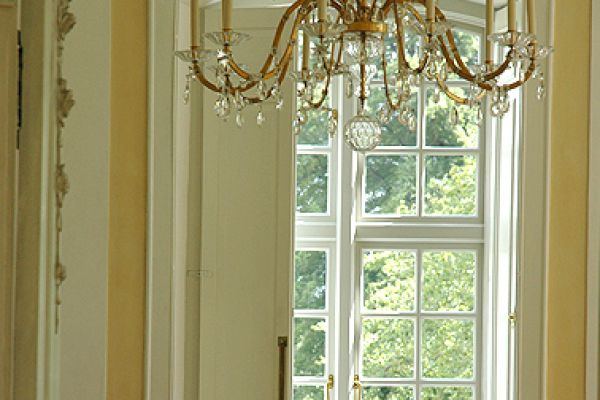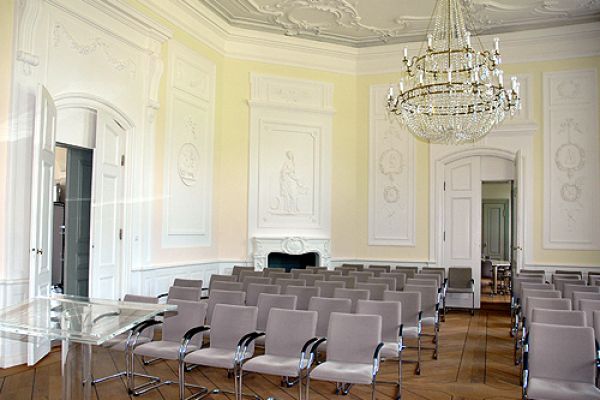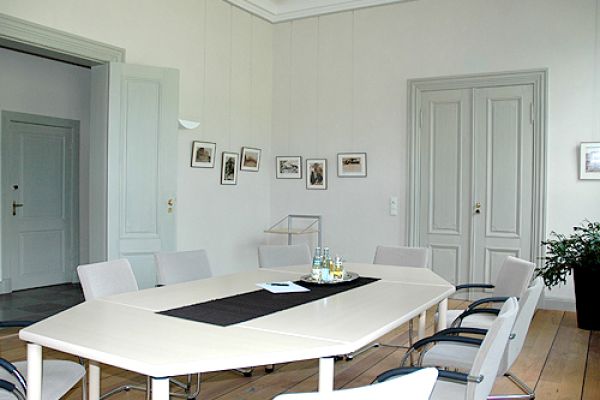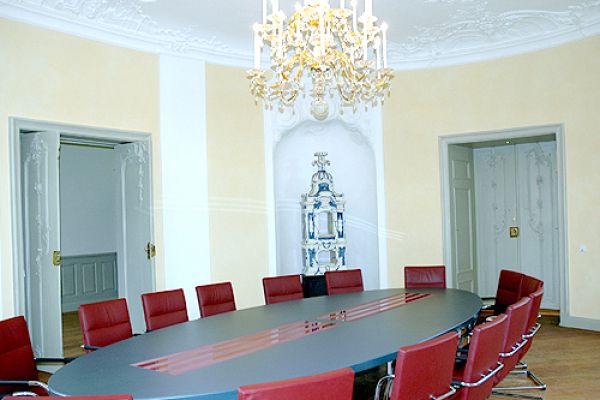History
The Research Center Borstel was founded in 1947 as a research institute with the main focus on tuberculosis and leprosy.
1963, Borstel is constituted as a foundation, the term "Research Institute Borstel, Institute for Experimental Biology and Medicine" was changed into "Research Center Borstel - Center for Medicine and Biosciences" in 1995.
The Federal Government and the Land already realized the importance of this centre many years ago and took up the RCB into the so-called "Blue List". This is a nation-wide association of 83 non-university research institutes which today calls itself Leibniz Association. In order to demonstrate its closeness to this scientific umbrella organization, the centre was renamed "Research Center Borstel - Leibniz-Center for Medicine and Biosciences" in the year 2004.
Science and Communication Center Manor House Borstel
Heart and spiritual center of the Research Center Borstel is the Manor House, built in the 18th century. After extensive restoration and technical modernisation the Manor House returned to be the venue for national and international meetings, center for the organisation of networks and scientifc transfer and finally the site for masterminding new scientific cooperations.
The unique atmosphere and the architectural beauty of the premises are an impressing setting for cultural events connecting economics, politics, art and culture in the most beautiful way.
13th Century
Borstel, together with the Jersbek and Stegen estates, belongs to the Hummersbüttel noble family.
1450
Detlev von Bockwolde marries the daughter of Hartwich the Fourth of Hummersbüttel and thereby becomes lord of the manor. This family, later recorded in the books as Buchwaldt, held Borstel for over 300 years. The Borstel estate includes the villages of Sülfeld, Seth, Oering, Grabau, Kayhude (only with the Heidkrug), the noble estate of Jersbek, Nienwohld, Bargfeld, Elmenhorst, Mönkenbrook, Rade and Stegen.
1555
For the first time in the Holstein area, estate subordination is mentioned in Borstel. Jasper von Bockwolde uses the term “serf”.
1737
The former manor house, for which there is no evidence, and the farm buildings are completely destroyed by fire.
1740
New construction of the farm buildings (including a large barn and livestock house).
1751
Friedrich von Buchwaldt completes the construction of a new manor house that serves the need for representation and the demands of the man who is considered to be highly educated. The magnificent brick building is considered the most important rococo mansion in the country. As far as the identity of the builder is concerned, one has to rely on guesswork as there are no clear research results. It is most likely attributed to master bricklayer Johann Christian Böhme. In addition to the construction of the new house, work also began on a new baroque garden in the French style. In front of the house is the wide courtyard with a large lawn and bordered on both sides by lime trees and its baroque elements can still be seen today.
1761
inherits Caritas Emilie v. Buchwaldt, only daughter of Friedrich von Buchwaldt.
1762
Borstel, one of the most well-off estates in the country, came into the possession of the Mecklenburg family of counts through Caritas Emilie's marriage to Johann Hartwig Ernst Graf Bernstorff, who thus became resident here.
1772
Andreas Peter Graf von Bernstorff, head of the Danish state, abolishes serfdom and sets up temporary leasing positions.
1798
His heirs sell the estate to Mathias Ooster.
1802
Sale to the Janisch family.
1804
Sale to Count v. Dewuitz
1806
The property was taken over by Cay Lorenz Graf Brockdorff. The garden and park behind the house were converted into an English landscape garden in accordance with the preferences of the time.
1838
The Baudissin count family acquires the property. This introduces hereditary tenancies so that the land becomes the property of the farmers over the course of the century.
1930
The margarine manufacturer Friedrich Bölck from Altengörs near Bad Segeberg becomes the owner of the estate and uses the manor house as a children's rest home. He develops a discount system that allows his customers to obtain certain rights to send their children for recreational purposes when they buy margarine.
1938
The manor house is taken over by the National Socialist government, which transforms the house into a training center for heads of the female labor service. All movable inventory will be auctioned.
1945
After the war, the manor house became a reception center for refugees, administered by the British military government.
1947
Borstel falls to the state of Schleswig-Holstein. The newly founded research institute with its directors and administration moves in. Over a long period of time, laboratories were even housed in the house, which caused considerable damage to the roof and masonry with their steam sterilizers.
1992
During a building inspection, it turns out that severe woodworm and fungal infestation are threatening the manor house. Due to the high humidity, the sponge infestation has reached a level previously unknown in the country. All floors are affected and saving the house is in question.
1992-2007
Only through a show of strength and the enthusiasm of numerous friends and patrons of the house can the manor house be saved and within these years it will be extensively restored and brought technically up to date. Special thanks go to the federal and state governments, the Segeberg district, the State Office for Monument Preservation, the German Monument Preservation Foundation, the Schleswig-Holstein Landscape Foundation and the Herrenhaus Borstel e. v.
June 15th, 2007
The Borstel manor house will be reopened in a glittering act as the “Knowledge and Communication Center in the Borstel Manor House”.


